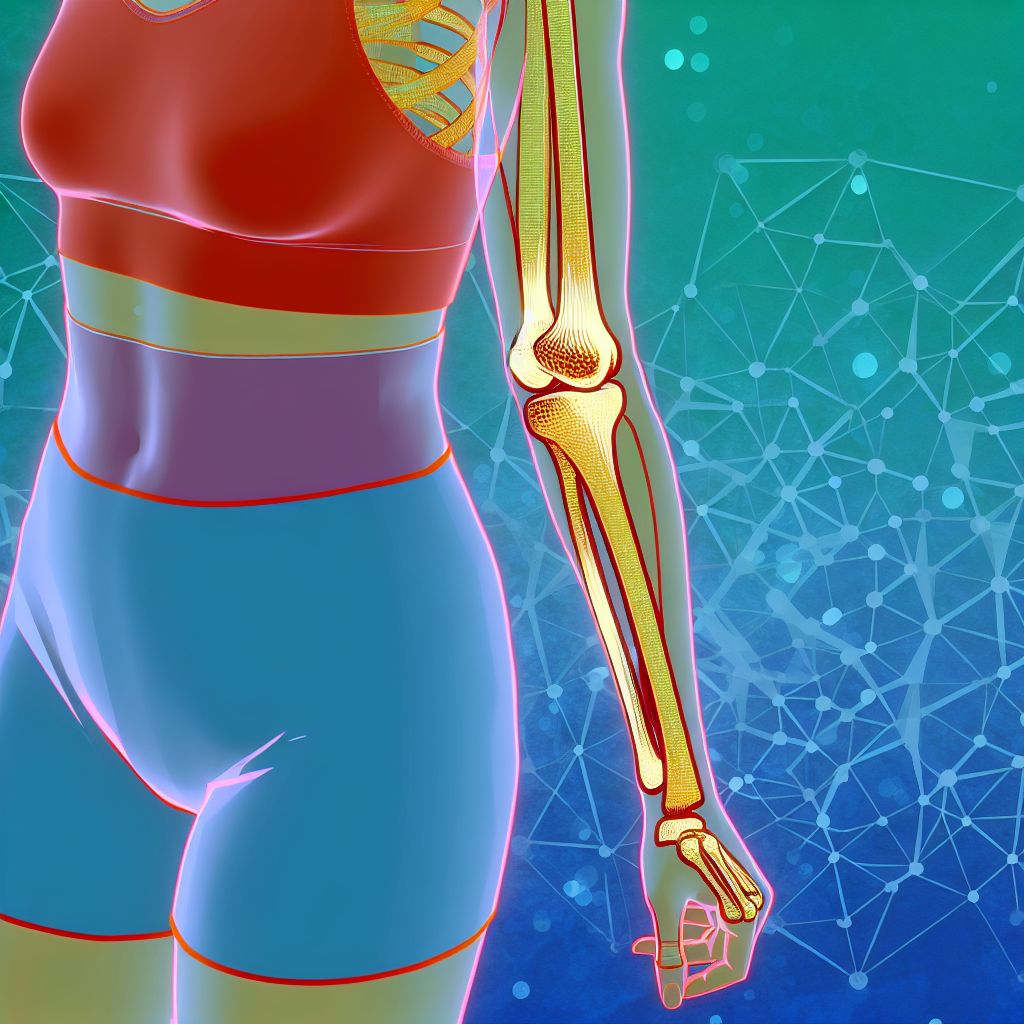Deutsch: Diarthrodialgelenk / Español: Articulación Diartrodial / Português: Articulação Diartrodial / Français: Articulation Diarthrodiale / Italiano: Articolazione Diartrodiale
Diarthrodial Joint in the fitness context refers to a type of joint that is also known as a synovial joint. These joints are characterized by their high range of motion and are the most common and most movable type of joint found in the human body. In fitness and exercise, diarthrodial joints play a crucial role because they are involved in almost all major movements and activities.
Description

Diarthrodial joints consist of two bones that terminate in smooth cartilage and are encased in a joint capsule filled with synovial fluid, which serves as a lubricant to reduce Friction and allow smooth joint movements. The design of these joints allows for different types of movements such as gliding, angular movement, rotation, and a combination of these movements.
Application Areas
Diarthrodial Joints are vital in numerous aspects of physical activity and fitness:
- Mobility and Range of Motion: These joints allow for extensive movement possibilities which are essential in all forms of physical exercise and sports.
- Strength Training: Exercises that build muscle often rely on the movement of diarthrodial joints to perform actions such as lifting, pushing, and pulling.
- Flexibility Training: Activities aimed at increasing flexibility involve stretching the muscles around these joints to improve motion range.
- Sport Specific Training: Many sports depend on the free movement of diarthrodial joints for efficient performance, including running, swimming, and throwing sports.
Well-Known Examples
- Knee and Elbow Joints: Both are examples of diarthrodial joints where hinge-like movements occur, crucial in running, jumping, and throwing.
- Hip and Shoulder Joints: These ball-and-socket joints offer the widest range of movement and are key in sports that require swinging actions like tennis or baseball.
- Wrists and Ankles: These joints allow for complex movements that are fundamental in gymnastics and dance.
Treatment and Risks
Effective use and care of diarthrodial joints in fitness involve several considerations:
- Proper Warm-Up: Activities that prepare these joints for exercise can prevent injuries such as strains or Sprains.
- Technique and Form: Using correct form during exercise protects the joints from undue stress and helps improve performance.
- Recovery and Rest: Adequate rest between intense physical activities ensures that these joints can recover and remain healthy.
- Injury Prevention and Management: Recognizing the signs of joint stress or injury early can prevent more serious conditions from developing.
Similar Terms
- Synovial Joint: Another term for diarthrodial joint, emphasizing the presence of synovial fluid within the joint capsule.
- Articulation: A general term used in anatomy to describe any joint where two bones come together.
Summary
In the fitness context, a diarthrodial joint or synovial joint is essential for enabling a wide range of movements across various parts of the body, making it fundamental to nearly all types of physical activities. These joints allow for complex movements necessary for sports, exercise, and daily activities, highlighting the importance of maintaining their health through proper techniques, warm-ups, and recovery practices.
--
Related Articles to the term 'Diarthrodial Joint' | |
| 'Diarthrosis' | ■■■■■■■■■■ |
| Diarthrosis in the fitness context refers to a type of joint, also known as a synovial joint, which is . . . Read More | |
| 'Humerus' | ■ |
| Humerus in the fitness context refers to the long Bone in the upper arm that extends from the shoulder . . . Read More | |
| 'Upper arm bone' | ■ |
| Upper arm bone: Upper arm Bone in the Fitness context refers to the humerus, the long bone that extends . . . Read More | |
| 'Biarticular muscle' | ■ |
| Biarticular muscle: Biarticular Muscle in the fitness context refers to muscles that cross and act upon . . . Read More | |
| 'Articulation' | ■ |
| Articulation in the Fitness context refers to the ability of joints in the Body to move through their . . . Read More | |
| 'Appendicular Skeleton' | ■ |
| Appendicular Skeleton in the fitness context refers to the part of the skeleton that includes the bones . . . Read More | |
| 'Deltoid' | ■ |
| Deltoid is a large, triangular muscle located on the uppermost part of the arm and the top of the shoulder. . . . Read More | |
| 'Amphiarthrosis' | ■ |
| Amphiarthrosis in the fitness context refers to a type of joint in the human body that allows only slight . . . Read More | |
| 'Glenoid cavity' | ■ |
| Glenoid cavity refers to the part of the scapula (shoulder blade) that forms the socket for the ball-and-socket . . . Read More | |
| 'Scapula' | ■ |
| Scapula in the Fitness context refers to the triangular-shaped Bone commonly known as the Shoulder blade. . . . Read More | |
